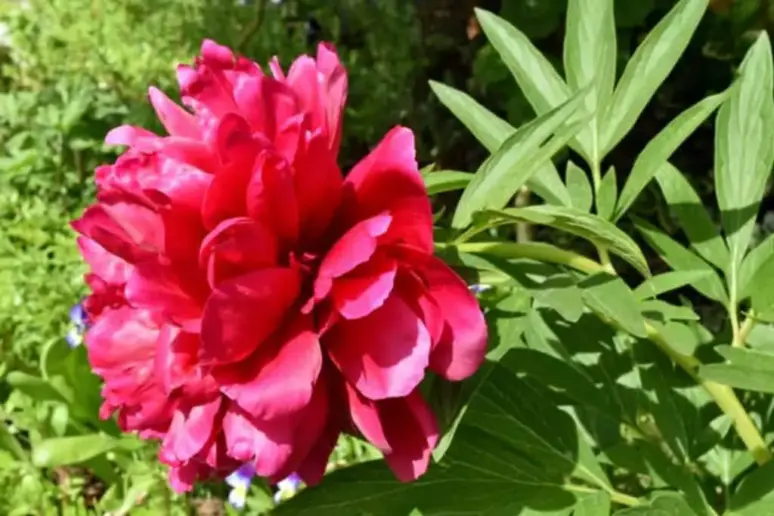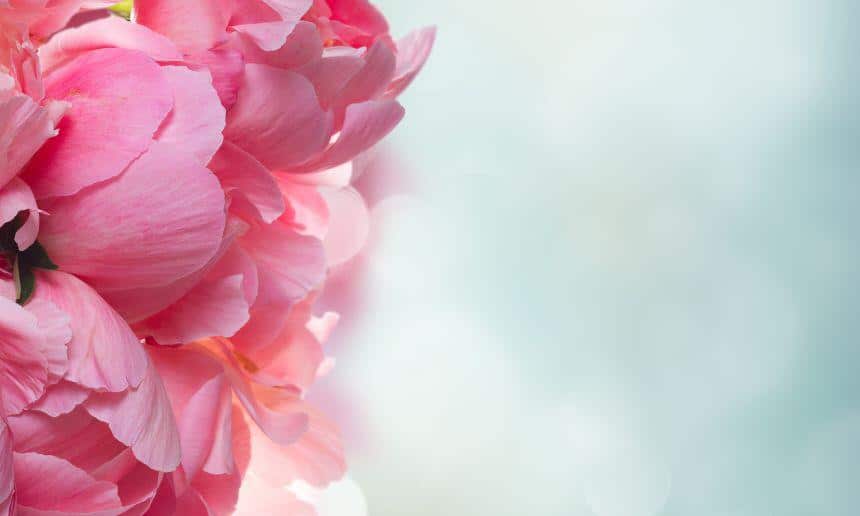Peony Leaves Turning Yellow? Here are 5 Reasons and Solutions
Easy to maintain and gorgeous looking, the peony is arguably one of the most popular ornamental plants.
Whether you grow it in a pot or a garden, peony is certain to liven up and add some beauty to any environment.
Plus, this plant is a rather hardy and long-lived perennial, so most likely you won’t have many problems with it.
Still, like with all plants, some issues may arise and, therefore, it’s important to learn about these problems and how to solve them.
One of the most common concerns people growing peony may notice is that its leaves are changing their color to yellow.
This can happen for a variety of reasons but, in most cases, it’s rather easy to handle them and bring the plant back to full health.
I’ll explain the most common causes of peony leaves turning yellow and share a few tips on solving these problems.
So, let’s dive in!
Table of Contents
Why are my Peony Leaves Turning Yellow?

While they’re not difficult to grow, some requirements when caring for peonies still have to be met.
The lack of proper care will cause stress to the plant and make it more vulnerable to certain pests and diseases.
Peony leaves turning yellow will be one of the first signs telling that something’s wrong with the plant.
Common causes for this are improper watering, infestations and infections, or some kind of environmental stress.
Carefully inspecting the affected plant will help you determine the exact reason why this is happening and take the appropriate action to revive your plant.
Below is a short overview of the typical causes and ways to deal with them.
Overwatering
The most likely cause of why peony leaves are changing color to yellow is overwatering.
Too much water, in combination with poorly draining soil, can damage the peonies.
Peony doesn’t need much water and is fairly drought-resistant, so they won’t react well to too much moisture.
The waterlogged soil will typically cause the peony root to rot which means that the plant won’t be able to properly absorb nutrients from the soil.
Leaves turning yellow is one of the first indicators that this is happening.
If you don’t adjust your watering routine when you notice that the leaves are starting to turn yellow, they will, after some time, turn brown, and eventually, fall off.
If this situation remains unchanged for a longer period, the lack of nutrients due to the root rot may ultimately kill your plant.
What to Do?
As soon as you determine that overwatering may be the reason peony leaves are changing color to yellow, you should cut down on the amount of water you add to the soil in which the plant grows.
To make sure you don’t add water when the plant doesn’t need it, always check the soil before watering.
Simply stick your finger into the soil and if it feels dry at the depth of two or three inches, then it’s time for watering.
Otherwise, hold on until the soil is dry.
Another thing to do is make sure the soil is well-draining, as waterlogged soil means that the roots are sitting in the water and, after a while, they will surely start to root.
If the rotting process has already started, you’ll need to replant your peony. When planting peonies, ensure that the soil is loose and free-draining.
Underwatering
Even though they are drought-resistant, peonies still need moisture, especially during the blooming period.
So, underwatering can also be an issue, just like overwatering.
As water is a key component of photosynthesis, the plant won’t be able to perform it properly and, as a result, the leaves will start to turn yellow.
What to Do?
To avoid yellow leaves due to underwatering, make sure you regularly water the peony, particularly during spring when the plant is in bloom and during the hot summer months.
At these times, you can freely water your peony twice a week.
The watering should not be so during other seasons of the year, and in case of rainfall, you can skip it altogether.
Just like I explained in the case of overwatering, it’s best that you develop a habit of regularly checking the soil for moisture, so you can get an idea of how much water your peony needs and how often.
Lack of Nutrients
If the peony is not getting enough nutrients from the soil, its leaves may start changing color and turn yellow and have white patches on its surface.
While the yellow leaves can point to general nutrient deficiency, the main reason why this may happen is the lack of iron, potassium, manganese, or nitrogen.
This means that the soil doesn’t have enough of these nutrients, or that they’re not present in the proportion that suits the plant.
You can recognize the lack of iron by the yellowing that starts on the upper leaves, while the veins remain green.
In the case of nitrogen deficiency, the younger leaves will first start to turn pale, before changing to yellow.
When a peony lacks potassium, it’s the older leaves that will turn yellow first, starting from the edges.
Similar symptoms will also occur when there’s a deficiency of manganese.
What to Do?
Logically, the way to deal with this issue is to provide your peony with more nutrients. You can do this by adding fertilizer to the soil.
The fertilizer you will use will depend on the type of nutrient that’s lacking, but it may be a good idea to use a balanced slow-release fertilizer, intended for peonies.
However, take care not to overdo it as too much fertilizer may harm the peony root and cause significant damage to the plant.
In addition, you can test the soil to see which nutrients exactly are lacking and determine the pH level, as plants may have problems accessing the nutrients if the soil is too acidic.
Lack of Sunlight

Another potential reason why the leaves of your peony may be turning yellow is the lack of sunlight.
The leaves of plants are green due to chlorophyll which they can’t produce if they’re not receiving enough sunlight.
So, if your peony is exposed to sun less than it’s supposed to be, the leaves will lose their bright green color and start changing to yellow.
Plus, sunlight provides energy for the plant and dries out moist leaves, reducing the risk of certain diseases.
When a peony is kept away from the sunlight for a longer period and, therefore, unable to properly perform photosynthesis, the leaves will fall off and the entire plant may die.
What to Do?
Dealing with this issue is as easy as moving your peony to a sunnier spot in the garden, where it can receive a decent amount of daily light.
However, it’s important not to place it in a location where it will be directly exposed to the sun for too long, as that can be just as harmful, especially if the plant is exposed to strong morning sunlight.
So, it’s important to strike the right balance and find a spot where your peony will receive sunlight for about six hours per day, which is the optimal amount.
Diseases
Certain diseases, such as rust, verticillium wilt, and the mosaic virus can also be the cause of peony leaves changing to yellow.
Rust is a fungal infection known to cause yellowish, brownish, or orange spots on leaves. Typically, the infection happens in the late summer.
Besides changing color, the affected leaves will wilt and dry, and eventually fall off. Verticillium wilt is also caused by fungus and commonly appears during the blooming period.
The affected peony will have its leaves and stems quickly wilt, turn yellow, and dry out. In most cases, the plant will completely die.
Mosaic virus or ring spot is a viral infection that causes yellow spots in the shape of rings or stripes on the leaf surface.
Besides changes in appearance, the affected leaves will quickly wilt and die. Mosaic virus is known to attack on portions of the plant, making it fairly difficult to detect.
What to Do?
Unfortunately, most of the diseases affecting the peony are untreatable.
So, if you notice that your peony is infected, the best thing to do is remove the affected plants to stop the spread of the disease.
However, you can work on prevention by maintaining a clean environment around the plant, providing enough air circulation, and making sure that the soil is not too moist as that favors the fungi development.
Conclusion
Once the peonies are established, they require very little of your attention, which is one of the main reasons for their popularity.
However, you’ll still have to apply proper cultivar practices to make sure your plant thrives and enjoys healthy growth.
This includes moderate but frequent watering, providing plants with enough sunlight and nutrients needed for healthy development.
Doing this will help you avoid most of the common issues, but still be on the lookout for certain changes, such as peony leaves turning yellow, as they may indicate some underlying issue.
When you notice the problem on time, it’s usually fairly simple to rectify it and revive the plant.




